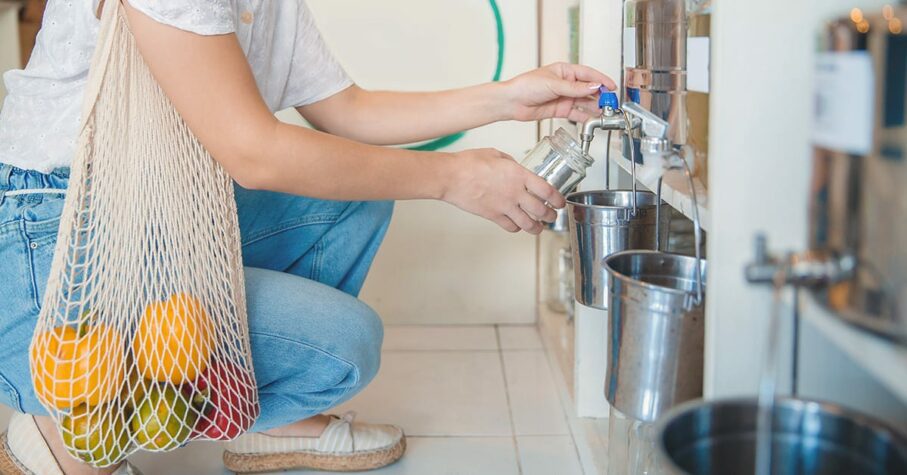
Earth Day is April 22 and it’s a good time to take stock of how we can take better care of the world around us.
With the COVID-19 pandemic and constant warnings of the threat of climate change, it can feel like the planet is falling apart, and there’s nothing we can do about it. But there is. We can all observe best practices when it comes to our planet, we can all do our best to live as cleanly and sustainably as possible. This means different levels of dedication for different people, but there are easy changes we can all make to live clean and green. Here are five examples.
1 Buy less & buy second-hand goods
Excessive consumerism is said to be one of the biggest contributors to global climate change. We buy way more stuff than we need, leading to excess waste in landfills and oceans, the depletion of natural resources, and the destruction of ecosystems. It also clutters houses and costs money.
Sustainability tip: Only buy what you need, or at least really want. Don’t shop just to pass the time. Repair before replacing, and when you must buy something, buy second hand. (Bonus: Research has found that reduced consumption is associated with increased well-being and decreased psychological distress.)
2 Stop wasting food
An estimated one-third, or about 1.3 billion tons, of all the world’s food goes to waste, or enough to feed every undernourished person on the Earth. According to a report from the United Nations Environment Programme, 61% of global food waste is from households and the average Canadian household wastes 79 kilograms of food every year. Wasted food results in wasted energy, water and emissions of methane gas. And, again, it’s a waste of money.
Green living tip: Make lists before shopping. Only buy what you’re going to eat. Use up what’s in the fridge before buying more food, moving items that need to be consumed to the front, where you can see them, and label your leftovers with the date they were made, so you know whether they’re still edible.
3 Eat locally and seasonably
Shipping food long distances has a significant impact on the environment. It takes more energy to transport, refrigerate and store, and requires more packaging to stay fresh and protected.
Longer storage during the time it takes to ship may also result in nutrient loss. Over time, foods that are not preserved or frozen may lose their nutritional value. According to the Gillings School of Global Public Health, a study found that green peas and green beans can lose from 15% to 77% of their vitamin C content within a week of being picked. Locally harvested fruits and vegetables are fresher and eating local supports your regional farmers.
Clean living tip: Look for local produce at your grocery store and find locally farmed meat, poultry, and dairy at farmer’s markets and independent stores.
4 Cut down on packaging
The production of plastic, glass, aluminum and paper packaging uses precious resources like water, energy, minerals, and wood. And, according to Foodprint.org, this manufacturing generates air emissions including greenhouse gases, heavy metals and particulates, as well as wastewater and/or toxic sludge. And this packaging winds up as litter, in a landfill, or in oceans.
“But wait!” you’re thinking. “Isn’t all that stuff recycled?” Unfortunately, in Canada, a lot of what goes into the blue bin never gets recycled, and only nine per cent of plastic waste is recycled. The CBC reported in 2019 that “Mountains of material collected in blue bins is piling up in landfills, being incinerated, or adding to the swirling islands of plastic flotsam that are choking oceans and killing wildlife.”
Green living tip: Bring your own reusable produce bags to the grocery store and your own takeout containers to restaurants. Use a refillable water bottle and a soda machine instead of buying water. Buying less and eating locally will also help cut down on your packaging. Find refillable soap stores where you can take your own containers for shampoo, conditioner, and laundry detergent.
5 Use eco-friendly cleaning products
Conventional cleaning products can contain hazardous, non-biodegradable ingredients from non-renewable resources. Green or eco-friendly cleaning products are sustainably manufactured using non-toxic, naturally derived, biodegradable ingredients.
Clean living tip: A lot of cleaning can be done with baking soda and vinegar and there are many great green cleaning options out there. You can also refill your household cleaning containers at the aforementioned soap refill shops.
In honour of Earth Day, consider these simple changes to lead a cleaner and greener lifestyle. Our planet will thank you now and into the future.

BLG171-220421EN







